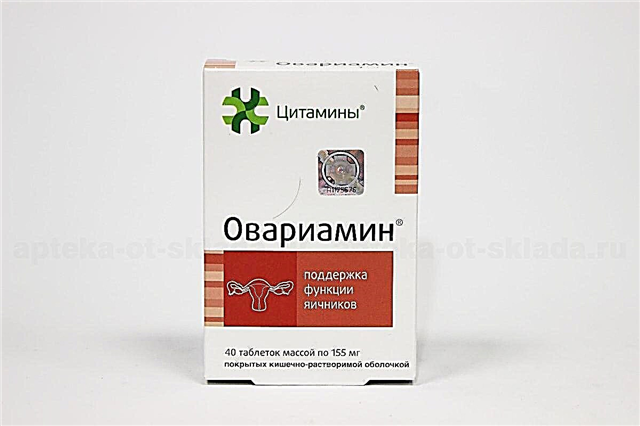Esophageal atresia in newborns is an abnormal pathology that forms during the gestational period. After birth, the baby is found to have a change in the esophagus, in which there are two communicating tubes. They are not connected with anything, the ends are blind. This condition prevents the infant from breathing normally and receiving food. If measures are not taken in a timely manner, a lethal outcome is possible.

Baby sleeping
What is esophageal atresia in newborns
Severe disease esophageal atresia is an abnormal intrauterine formation of an organ. Instead of the usual esophagus, the child has two processes departing from it. Because of this structure, the baby has difficulty breathing and eating. Surgical intervention is required for treatment.
How common is the disease
Among all newborns, atresia occurs 1 time in 5000 babies. Most often, this indicates a genetic mutation, pathological changes during pregnancy, drinking and smoking during gestation. However, the exact reasons for this phenomenon cannot be predicted.
Important! Expectant mothers should lead a healthy lifestyle and observe the principles of good nutrition.
Complications for the newborn
A baby with esophageal atresia is unable to eat and breathe normally. The first signs of the disease begin to manifest themselves a couple of hours after birth. It is necessary to provide first aid to a newborn in the first 12-24 hours. If this is not done, the baby will die. Surgery is carried out as quickly as possible. It all depends on the form of atresia. The sooner the operation is done, the sooner the baby can eat normally.
Forms of atresia
Diseases of the esophagus in newborns have several forms. Each of them has its own characteristics, but surgical intervention cannot be avoided. The condition of the child depends on the formation of a fistula and the isolation of the processes.
With lower fistula
The fistula is divided into two parts, attached to the lower segment of the digestive tube, located in the chest region. The second section of the process goes into free space and does not play any role. Due to the fact that the appendix is not fastened to the stomach, the esophagus is blocked if you feed the baby. During the operation, it is necessary to attach the free end to the upper segment of the esophagus.
With a median fistula
In the center of the esophagus, two processes depart without an isolated end. In this case, the main organ has a normal appearance and lumen, but due to the lack of connection with the trachea and stomach, complications arise. An operation is needed to restore the organ.

Boy in a blue cap
Isolated
The processes extending from the esophagus have closed ends. When a diagnosis is made, a probe is inserted and a stream of air is passed into the digestive tube, it exits through the nose. To form a normal organ, you will need to cut the ends of the tubes, form an anastomosis and sew them. After undergoing rehabilitation, the baby will be able to lead a normal life.
With proximal and distal fistula
Atresia is characterized by obstruction of food through the esophagus, since it is not communicated with the stomach. Because of this, food stagnation occurs. The baby may choke on milk, vomit violently.
The processes extend from above and below the esophagus in different directions. To connect them together during the operation, additional tissues are needed, which are taken from the small intestine.
Isolated tracheoesophageal fistula
Two processes of the fistula are located at different ends of the esophagus, the distance between them is large, which does not allow them to be sewn together. For treatment, a transplant of a segment of the small intestine will be required. A baby with this diagnosis does not have a swallowing reflex, saliva constantly flows out. He should not be breastfed until the surgery.
Important! Atresia is often accompanied by concomitant bowel and heart disease.
The reasons for the development of pathology
Changes in the development of the esophagus in utero occur for little known reasons. However, there are accompanying factors:
- heredity;
- mutations;
- smoking and drinking alcohol during pregnancy;
- frequent stress during gestation.
The formation of the esophagus and trachea in utero occurs from one area of the small intestine. Organ division begins at 4-5 weeks of gestation. Atresia is formed when the processes of divergence of two organs are disturbed.
During pregnancy with such a diagnosis, the following symptoms were observed:
- high water;
- swelling of the limbs;
- severe toxicosis.
Such signs were presented by gynecologists who have seen pregnant women with such a deviation in the fetus.
Symptoms of the disease
After birth, the newborn has the following symptoms:
- vomiting;
- the release of foam from the mouth and nose;
- breathing disorder;
- tachypnea;
- dyspnea;
- asphyxia;
- cyanosis;
- cough;
- spitting up with undiluted milk.
The first signs of the disease appear several hours after birth. Diagnosis is carried out in the delivery room. The child is immediately placed with an external tracheostomy for breathing. A feeding tube is also inserted through which the baby feeds while preparing for the operation.

Nurse and newborn
Diagnostics
Treatment of atresia is possible only by surgery. Diagnosis is carried out in utero and immediately after birth. The sooner the diagnosis is made, the faster the operation will be performed and the baby will be healthy.
During pregnancy
During the gestation of a newborn, three screening ultrasounds are performed. The first is done at 12 weeks. With the correct position of the fetus, a darkening is visible in the esophagus and trachea. This is the first sign that indicates atresia. At 20 and 36 weeks, the picture becomes clearer.
In a newborn
The first tests are carried out in the delivery room. For diagnostics, the following procedures are carried out:
- Introduction of the probe through the esophagus. During the procedure, there are difficulties on the way to the blind end. The child has an attack of vomiting.
- Elephant's test. A probe is installed in the blind end of the esophagus, air is passed through it. It should come out through the nose with a whistle.
- X-ray examination with contrast. Allows you to fully confirm the diagnosis and prescribe a recovery operation.
Diagnostics is carried out quickly, doctors provide first aid to the newborn in a timely manner.
Important! The newborn is urgently recorded for surgery.
Preparing for surgery
If it is known in advance that the child will be born with atresia, he is taken from the delivery room to the operating room immediately after the examination. The nurses are engaged in the preparation of the newborn: they put a diaper on the baby, inject all the necessary drugs.
While the operation is underway, the baby's mother is recovering from childbirth. It lasts 6 hours after vaginal delivery and 12 hours after cesarean section.

Boxing kid
Rehabilitation, possible complications
The postoperative period lasts 7 days. X-rays are taken after a week to make sure everything is in order. If there are no complications, then the baby is transferred to oral feeding. Surgical intervention is performed by the laparoscopic method, so the scar will practically not be visible.
This pathology has some consequences in the future:
- frequent SARS;
- increased gas formation;
- reflux;
- regurgitation of milk.
The survival rate after surgery for atresia is 90-100%, if the baby does not have concomitant diseases. If additional diseases of the bowel or heart are observed, then the survival rate decreases to 30-40%.
Atresia is rare in newborns. There are 5,000 healthy children for 1 sick child. It is not known all the reasons why such changes occur in the fetus in utero. If a diagnosis is made in a timely manner, doctors quickly carry out an operation, after which the baby can live a normal life.



